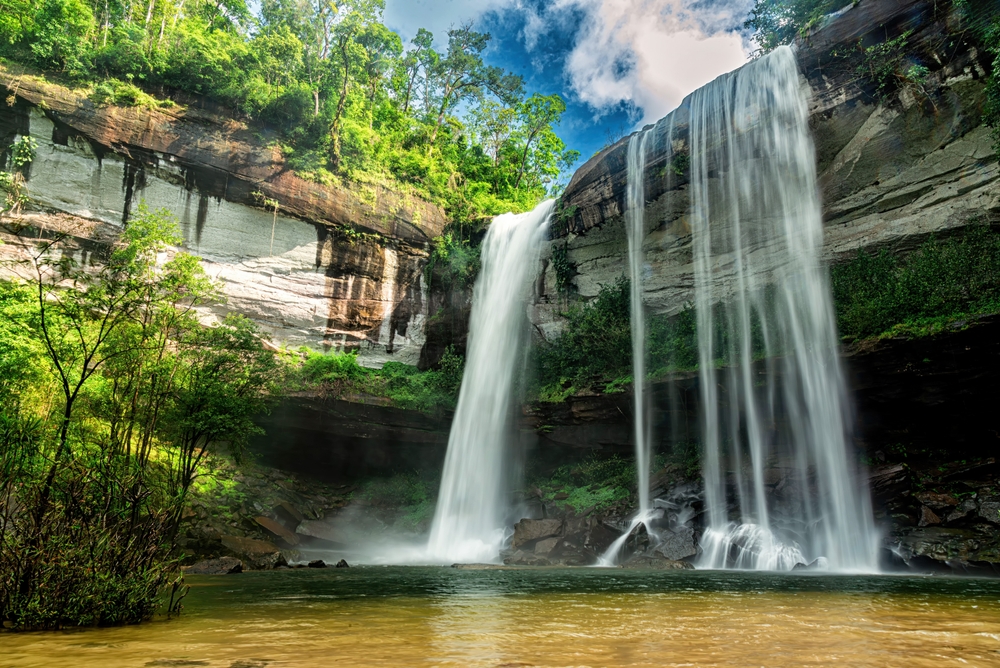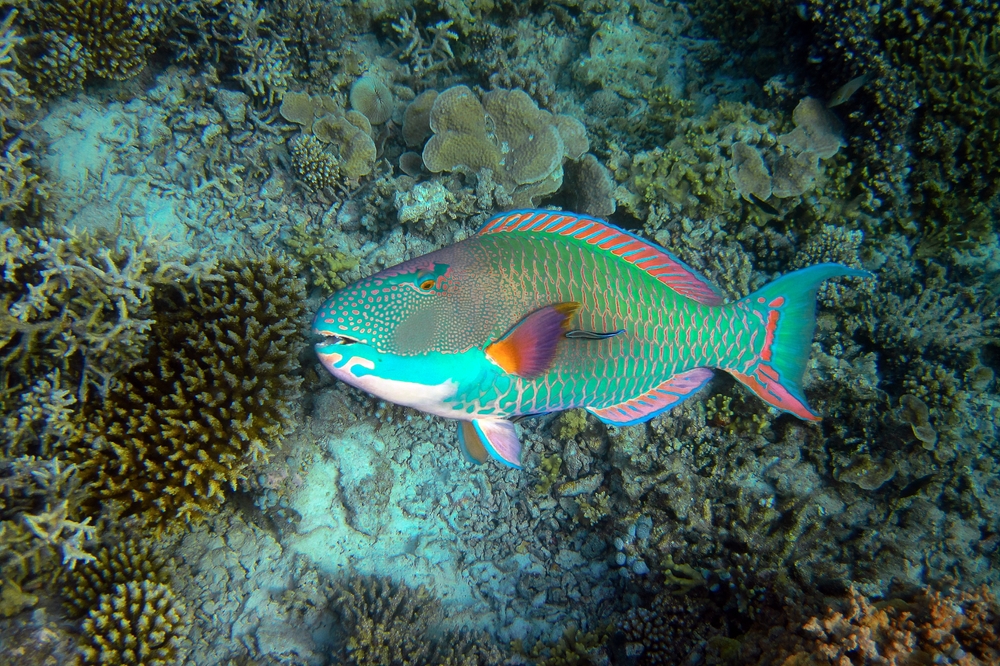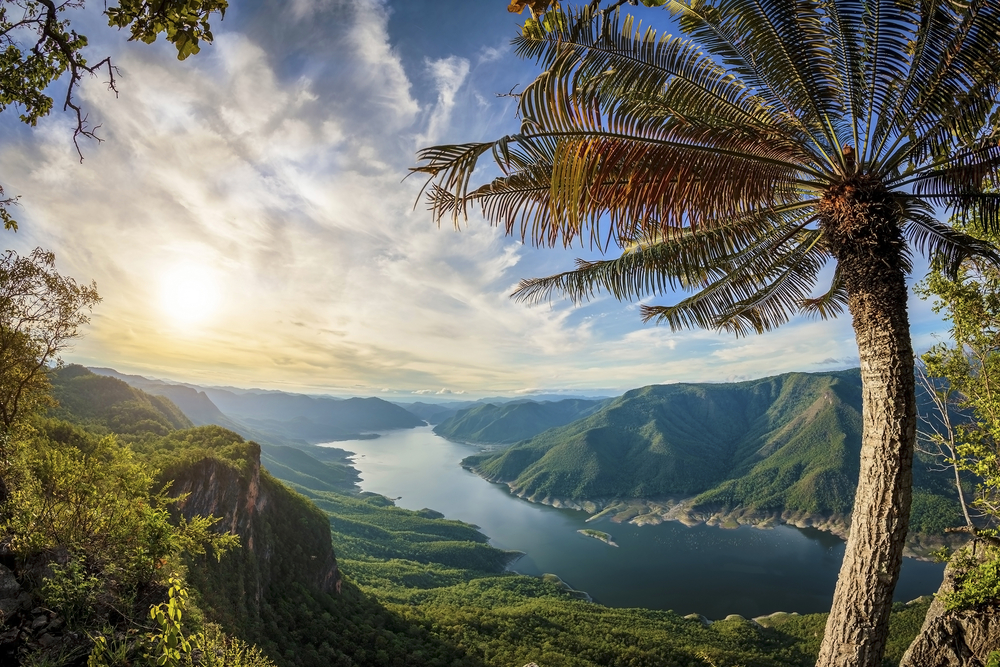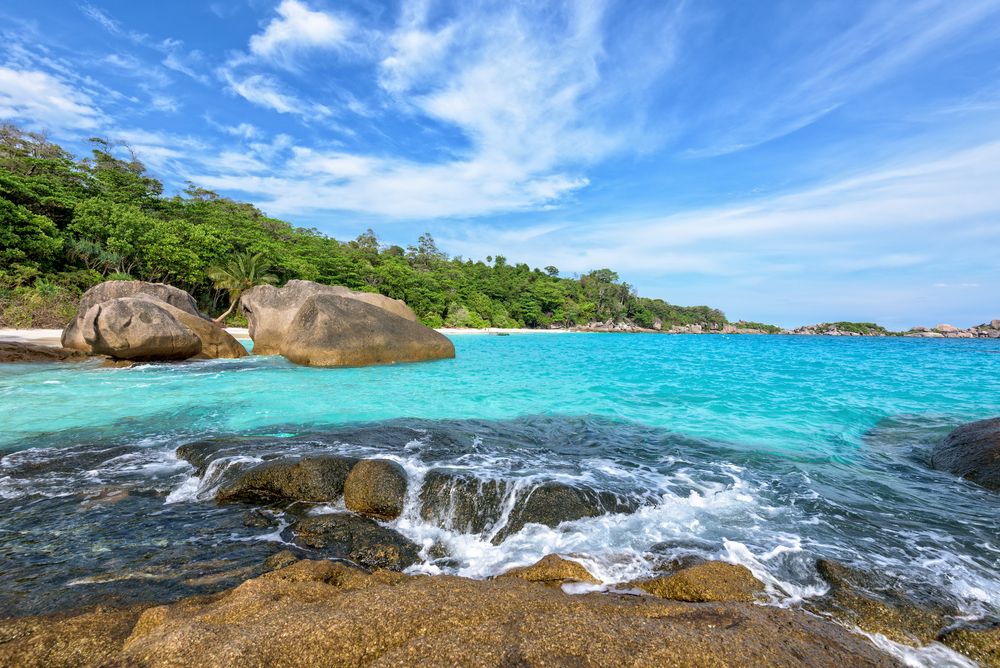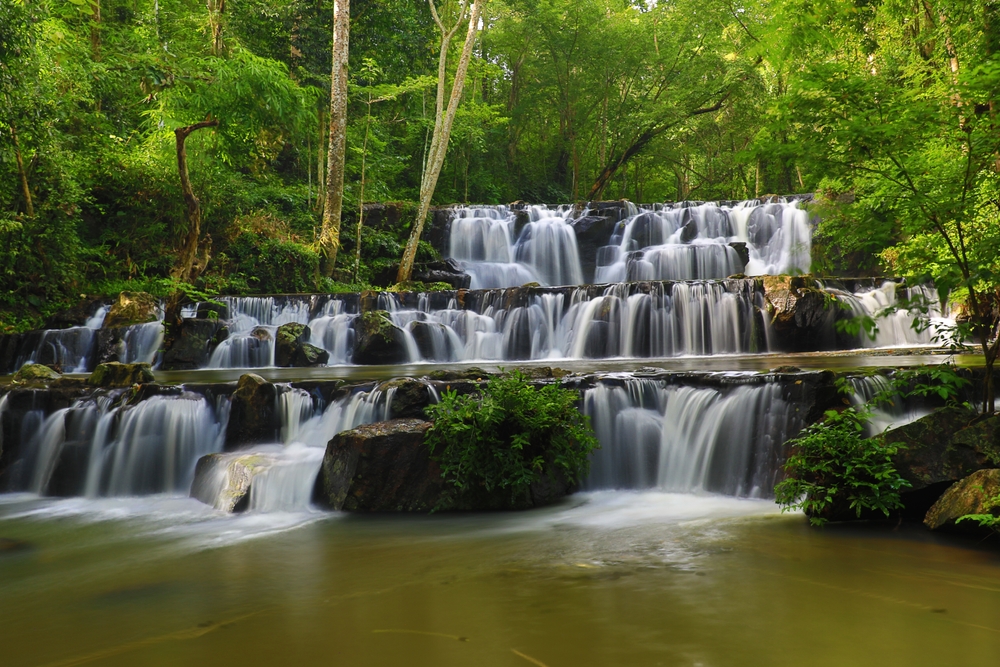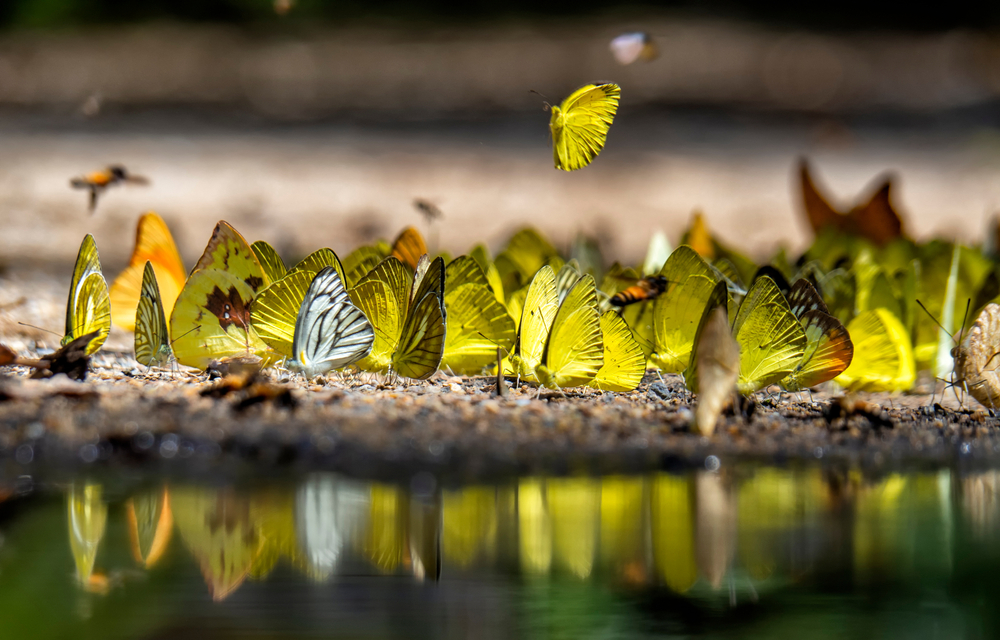Phu Chong Na Yoi Overview
Phu Chong Na Yoi National Park (อุทยานแห่งชาติภูจอง-นายอย) is a stunning natural expanse located in the Ubon Ratchathani Province of northeastern Thailand. Spanning approximately 431 square miles (1,115 square kilometers), the park lies near the borders of Laos and Cambodia, making it a significant ecological and geographical area within the region.
Its name reflects the local language, with “Phu” meaning mountain, a nod to the park’s undulating terrain. Established in 1987, Phu Chong Na Yoi offers a sanctuary for diverse flora and fauna amidst dramatic landscapes.
The terrain of Phu Chong Na Yoi National Park is characterized by a mix of rugged mountains, verdant valleys, and seasonal streams. The park is dominated by sandstone plateaus and cliffs, with its most iconic feature being Pha Phueng, a towering cliff offering panoramic views of the surrounding forest and neighboring countries. The forest cover is diverse, including dry evergreen, mixed deciduous, and dipterocarp forests.
This combination creates a visually dynamic environment that changes with the seasons, offering lush green foliage during the rainy months and golden hues in the dry season. The park is also home to several picturesque waterfalls, with Huai Luang Waterfall being a standout attraction. This three-tiered cascade plunges dramatically into a pristine pool, providing a popular spot for visitors.
Wildlife in the park is rich and diverse, reflecting the area’s unspoiled ecosystems. Mammals such as Asiatic black bears, clouded leopards, and barking deer can be found roaming the forested regions, while smaller creatures like civets and porcupines are also common.
Bird enthusiasts will be delighted by the presence of vibrant species such as hornbills, drongos, and the elusive Siamese fireback, Thailand’s national bird. Amphibians and reptiles, including various frog species and monitor lizards, also inhabit the park’s dense forests and waterways.
The park’s natural features are a significant draw for tourists, with the dramatic cliff views, serene waterfalls, and lush forests providing ample opportunities for exploration. Visitors often engage in hiking and trekking, with trails of varying difficulty weaving through the diverse landscapes. Pha Phueng Cliff and the Huai Luang Waterfall are particularly popular spots for photography and nature observation. Camping and birdwatching are other favored activities, offering visitors a chance to immerse themselves fully in the park’s serene ambiance.
Phu Chong Na Yoi faces several conservation challenges, including deforestation pressures and wildlife poaching. However, conservation efforts by the Thai government and local communities have been instrumental in protecting its ecosystems. Environmental education and sustainable tourism initiatives have also helped raise awareness about preserving the park’s natural beauty. These efforts have led to a gradual recovery of some wildlife populations and the stabilization of forest cover in critical areas.








































































